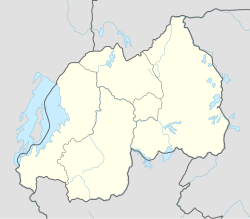
The charismatic movement is the international trend of historically mainstream Christian congregations adopting beliefs and practices of Charismatic Christianity similar to Pentecostalism. Fundamental to the movement is the experience of baptism with the Holy Spirit and the use of spiritual gifts (charismata).
An African-initiated church (AIC) is a Christian church independently started in Africa by Africans rather than chiefly by missionaries from another continent.
George Nkwe was the first Cameroonian pastor, ordained in 1866 by British Baptist missionary Alfred Saker. A native Bamileke, Nkwe was kidnapped and sold into slavery at a young age, eventually becoming a slave of King Mpondo Ngando Akwa II of the Duala.
The Apostolic Vicariate of Kivu is the name that was given to two vicariates of the White Fathers, a Catholic missionary society in the Latin Roman Rite Catholic Church. Both vicariates served lands around Lake Kivu during the colonial era. The first vicariate, from 1912 to 1922, served what are now Rwanda and Burundi. The second vicariate, from 1929 to 1952, served territory in the east of the Belgian Congo.
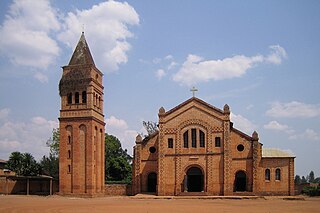
Christianity is the largest religion in Rwanda. The most recent national census from 2012 indicates that: 43.7% of Rwanda's population is Roman Catholic, 37.7% is Protestant, 11.8% is Seventh-day Adventist, 2.0% is Muslim, 2.5% claims no religious affiliation, and 0.7% is Jehovah's Witness.
The Apostolic Vicariate of Southern Nyanza was a Roman Catholic mission territory in Eastern and Central Africa. It was an apostolic vicariate split out from the larger Vicariate of Nyanza in June 1894. It lost territory to the Apostolic Vicariate of Kivu in 1912, and was divided into the vicariates of Bukoba and Mwanza in 1929.

Kabgayi is just south of Gitarama in Muhanga District, Southern Province, Rwanda, 25 miles (40 km) southwest of Kigali. It was established as a Catholic Church mission in 1905. It became the center for the Roman Catholic Church in Rwanda and is the site of the oldest cathedral in the country and of Catholic seminaries, schools and a hospital. The church at first supported the Tutsi ruling elite, but later backed the Hutu majority. During the 1994 Rwandan genocide thousands of Tutsis who had taken refuge here were killed. Some survivors admire the courage of many priests who helped them during those difficult days, like Father Evergiste RUKEBESHA and many others. Later, some Hutus including three bishops and many priests were killed by the rebels RPF soldiers. A mass grave beside the hospital is marked by a memorial. Inside the Basilica are kept the bodies of the three bishops killed by FPR rebels. Two of them were refused by the Rwandan government to be transferred in their own cathedrals.
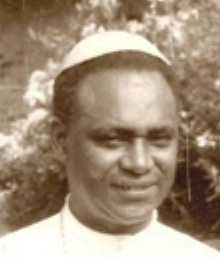
Aloys Bigirumwami was a Rwandan prelate of the Roman Catholic Church. He served as Bishop of Nyundo from 1959 to 1973, having previously served as its apostolic vicar.
Zaza is a community in Rwanda to the east of Lake Mugesera and about 10 miles (16 km) west of Kibungo. It is in the Ngoma District of the Eastern Province of Rwanda.
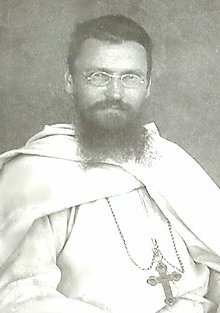
John Joseph Hirth was a Catholic Bishop in German East Africa, known as the founder of the church in Rwanda.
Rubya is the site of a Catholic Church mission to the south of Bukoba near the west bank of Lake Victoria in Muleba District, Kagera Region, Tanzania. A seminary was established at Rubya in 1904, one of the first in German East Africa, as it then was. The seminary still operates. There is a cathedral, a nursing school and a district hospital, all operated by the church.
Joseph Francis Marie Sweens, was a Dutch Roman Catholic missionary bishop who served as the Vicar Apostolic of South Nyanza in German East Africa, later in the British-administered Tanganyika Territory, now Tanzania.
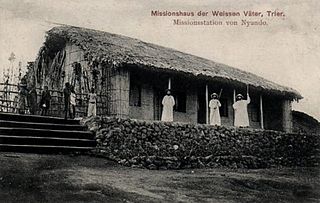
Nyundo is a community in the Rubavu District of Western Province, Rwanda, on the Sebeya River to the east of Gisenyi. It is the location of one of the first Catholic missions to be established in Rwanda, and today is the headquarters of the Roman Catholic Diocese of Nyundo.

Léon-Paul Classe, M.Afr. was a Catholic priest who was Vicar Apostolic of the Apostolic Vicariate of Ruanda, in what is now Rwanda, from 1922 until his death in 1945. During his time as a missionary priest and then bishop a great many Rwandans were converted to Christianity. Classe was influential in persuading the Belgian colonial administration to favor the Tutsis as a ruling caste in the country over the Hutu majority.
Laurent-François Déprimoz, M. Afr. was a Catholic priest who was Vicar Apostolic of the Apostolic Vicariate of Ruanda and then of the Apostolic Vicariate of Kabgayi.
The Apostolic Vicariate of Victoria Nyanza was a Catholic mission of the White Fathers in the region around Lake Victoria from 1883 to 1894.
Buddu is a county (Ssaza) of the kingdom of Buganda in what is now Uganda.
The Benebikira Sisters are a Roman Catholic religious institute of women founded in Rwanda in the early 1900s. Their Charisma is to evangelize by example. They do this by their diverse works of service, carried out with joy and love. Their mission is education, particularly for girls, care of the sick and the poor, especially women and children. Their spirituality is based on the Jesuit model of contemplation in action, seeing God in all things. However the expression of their Catholic faith and consecrated spirituality is formed by their Rwandan culture. The Benebikira are one with their people, sharing their Christian faith that calls them to be a people of hope and a voice for justice and love. Numbering almost 400 sisters, they have 55 communities located primarily in Rwanda but also in Burundi, Uganda, Congo, Kenya, and Rome. Their Kinyarwanda name means “Daughters of Mary” in English.
The Catholic Youth Organization Ghana is a Catholic youth organization in Ghana. CYO Ghana is a member of the Catholic umbrella of youth organizations Fimcap.
Catarina, sometimes Caterina, Zenab (1848–1921) was a Sudanese Catholic missionary.
